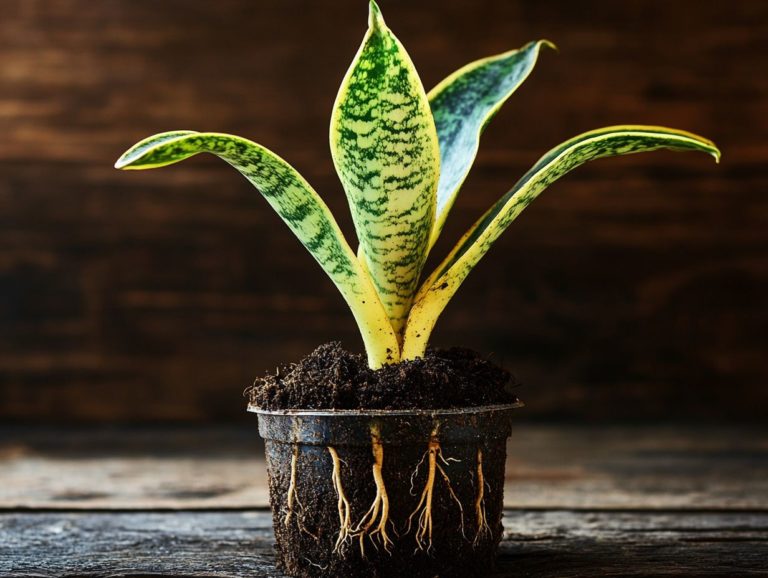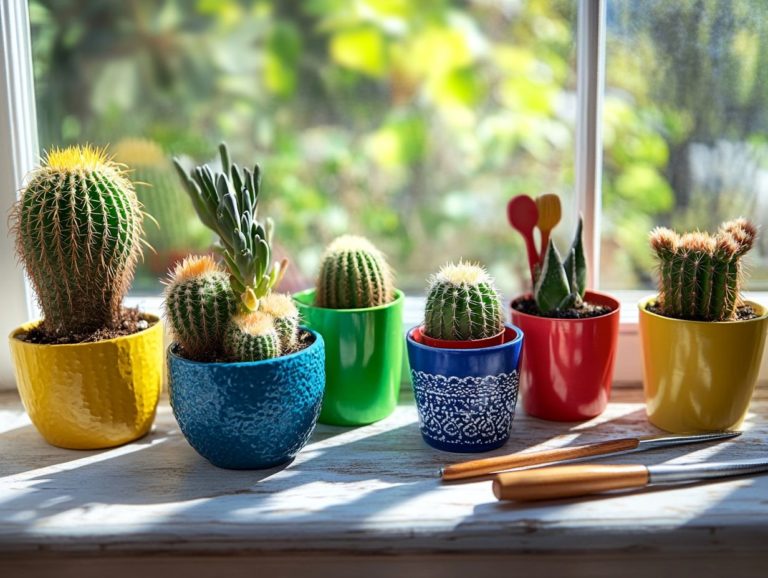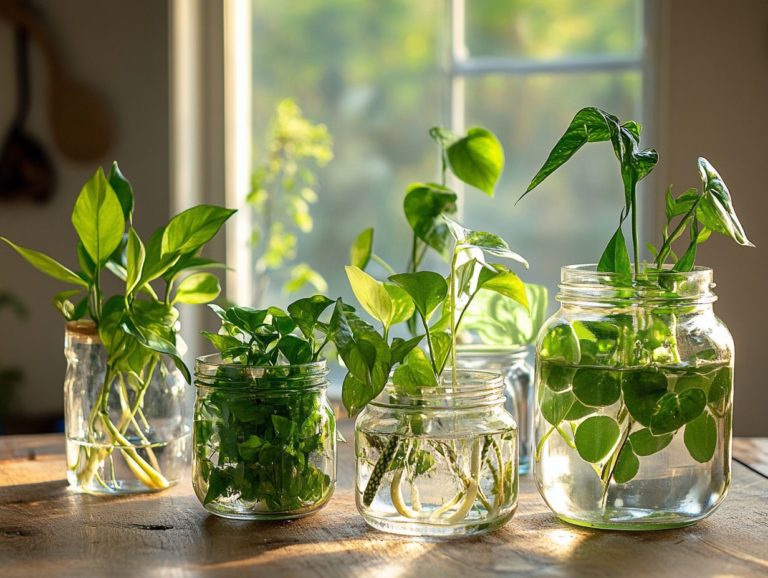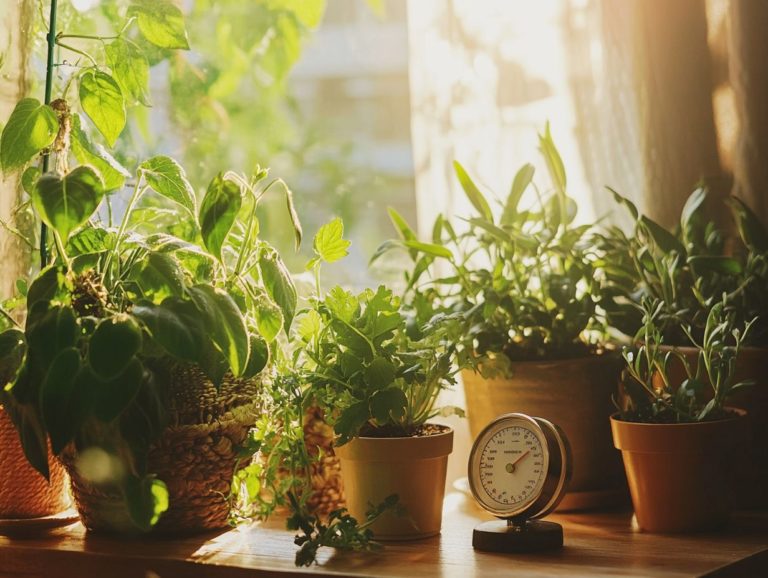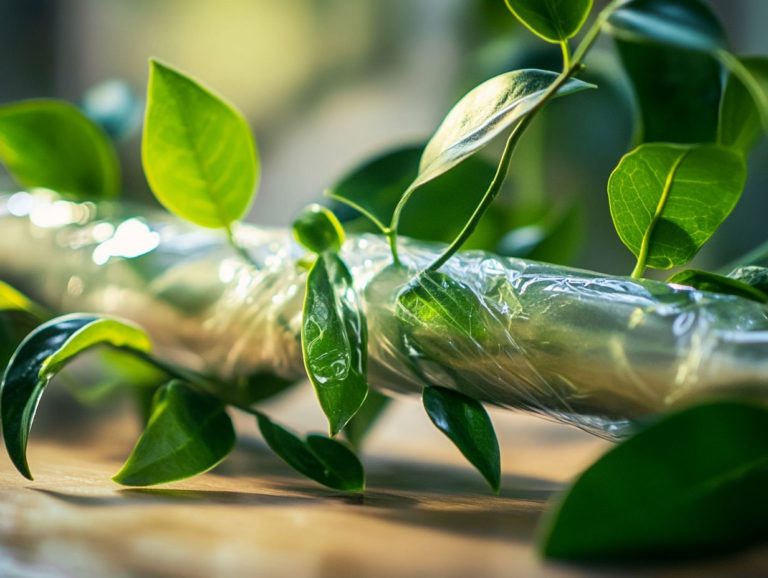A Beginner’s Guide to Plant Propagation
Plant propagation is a gratifying journey for both novice and seasoned gardeners, allowing you to nurture new life from existing plants. By grasping methods such as seed propagation, cuttings, division, and grafting, you unlock a world of possibilities to expand your garden.
This guide will provide you with essential supplies, invaluable tips for success, and insights into common pitfalls to steer clear of. Whether your goal is to multiply your favorite flowers or cultivate fresh vegetables, mastering the art of propagation has the potential to elevate your gardening experience to new heights.
Contents
Key Takeaways:

- Plant propagation is the process of creating new plants from existing ones, and it is essential for gardeners and plant enthusiasts to expand their collections and save money.
- There are four main methods of plant propagation: seed, cutting, division, and grafting. Each method has its benefits and requires specific supplies and tools.
- To successfully propagate plants, consider factors such as timing, temperature, and lighting. Avoid common mistakes such as overwatering and using improper techniques to ensure the best results.
What is Plant Propagation?
Plant propagation is your gateway to creating new plants from the ones you already cherish, making it an essential practice for any plant owner eager to expand their indoor garden or share the joy of greenery with friends and family.
You can try different techniques like stem cuttings, leaf cuttings, and root cuttings, all vital for building a diverse and thriving plant collection.
By mastering the nuances of plant propagation, you not only elevate your plant care skills but also deepen your connection with nature, giving you the power to nurture vibrant stems and monitor their growth with confidence.
Explanation and Importance
Understanding plant propagation is essential for anyone eager to grow a healthy indoor plant collection, as it ensures the continuity and health of various plant species within your indoor garden.
Mastering different propagation methods helps you grow your plant collection without spending a lot while also promoting biodiversity in your space. Effectively using rooting hormones substances that encourage plant cuttings to grow roots can significantly enhance the success rate of these techniques, allowing your new plants to establish themselves quickly.
Incorporating these methods into your regular plant care routine can also help mitigate the impact of common pests that often threaten plant health.
Engaging in propagation not only nurtures a deeper connection with nature but also fosters a more resilient indoor ecosystem.
Methods of Plant Propagation
You ll find a variety of effective methods for plant propagation at your fingertips, including seed propagation, cutting propagation, division propagation, and grafting propagation. Each method comes with its own set of benefits and challenges, making it an exciting journey for any houseplant enthusiast.
By mastering these techniques, you ll be well-equipped to cultivate your favorite plant species, from Pothos to Rubber Trees and ZZ Plant varieties. Plus, you ll have the freedom to experiment creatively with foliage plants and succulents like Echeveria and Sedum, turning your plant care into an art form.
Seed Propagation
Now is the perfect time to start your journey with seed propagation! This method allows you to nurture new plants from seeds, a process that demands thoughtful attention to soil types, precise watering, and optimal conditions for germination.
To embark on this journey of successful propagation, your first step is to choose high-quality seeds. The vigor and health of your future plants will hinge significantly on their genetic potential. Once you’ve selected the finest seeds, prepare the soil meticulously. It should be nutrient-rich and well-draining, creating the perfect haven for young roots to flourish.
During the germination phase, keep a watchful eye on growth. Adjust moisture levels and light exposure as needed to encourage robust development. By embracing these plant care tips, you can greatly enhance your chances of successful propagation, ultimately cultivating a vibrant collection of beloved houseplants.
Cutting Propagation
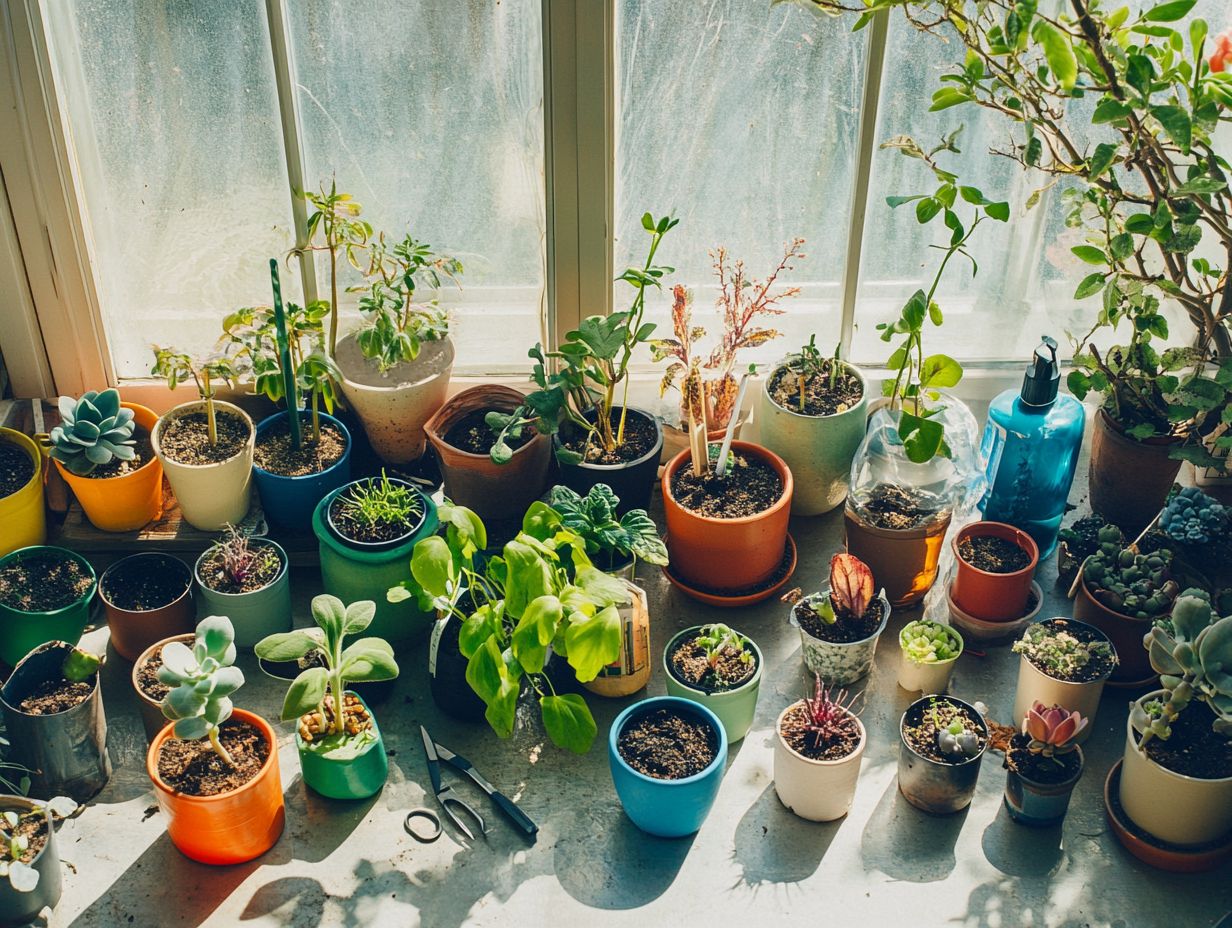
Cutting propagation involves taking a portion of a plant, like stem or leaf cuttings, and encouraging it to develop roots using rooting hormone and attentive care.
This method not only maximizes your gardening potential but also gives you the chance to clone those prized plants you adore. Identifying nodes those critical points on a stem where leaves sprout is essential for successful propagation. These nodes need to be submerged in water or soil to stimulate growth.
When selecting healthy stems, focus on those that are firm and blemish-free. Using clear containers offers an excellent way to monitor progress, allowing you to visually track root development.
Act fast against common pests like aphids and spider mites that could threaten your cuttings. Regular inspections and preventive measures can significantly boost the success of your propagation efforts.
Division Propagation
Division propagation is a technique where you separate plants into smaller sections, each boasting its own roots and stems. This method is particularly well-suited for resilient houseplants like the Boston Fern and Calathea.
This technique boosts growth, giving your plants a vibrant life! Before you dive into separating your plant, ensure that the stems are healthy and the roots are well-developed; these qualities play a pivotal role in the success of your new plant sections.
By prioritizing the integrity of these components, you can transform your division efforts into thoughtful gifts for friends and family, nurturing a collective enthusiasm for greenery and sustainability.
Grafting Propagation
Grafting propagation is an advanced method where you join a scion from one plant the top part you wish to grow with the rootstock of another, which supports it. This method allows you to combine desirable traits, ultimately enhancing the health of the plants involved.
This intricate process produces hybrids that can yield fruit more efficiently and cultivates plants that may exhibit greater resistance to common pests and diseases.
When exploring the various grafting techniques, you’ll find methods like whip-and-tongue, cleft grafting, and saddle grafting, each tailored to different plant types and desired outcomes. For instance, cleft grafting is particularly well-suited for propagating fruit trees, while whip-and-tongue is ideal for young, flexible stems.
Grasping these techniques, along with essential plant care tips, is vital for achieving successful grafting. With this knowledge, you can nurture robust plants that thrive in various environments.
Supplies and Tools for Plant Propagation
Having the right supplies and tools for plant propagation is essential for achieving successful outcomes across various methods, whether you re employing stem cuttings, division, or grafting.
Key items include sharp shears, rooting hormone, glass vessels, and clean water. Each of these components plays a significant role in enhancing your propagation journey as explained in the science behind plant propagation and elevating your overall plant care experience.
Essential Items for Each Method
Each propagation method requires specific essential items to maximize your success. Clear containers are vital for visibility, allowing you to monitor progress easily. Proper watering tools help maintain optimal moisture levels.
Using sterile cutting tools is crucial for preventing disease and promoting healthy growth. A rooting hormone can significantly enhance the likelihood of your cuttings taking root effectively. Temperature control equipment, such as heat mats, plays an integral role in supporting seed germination and improving grafting success by creating a conducive environment.
For division propagation, having sharp spades or trowels ensures clean, precise divisions of parent plants.
Each of these tools not only aids in specific techniques but also deepens your understanding of the unique requirements necessary for thriving plant life.
Tips for Successful Plant Propagation
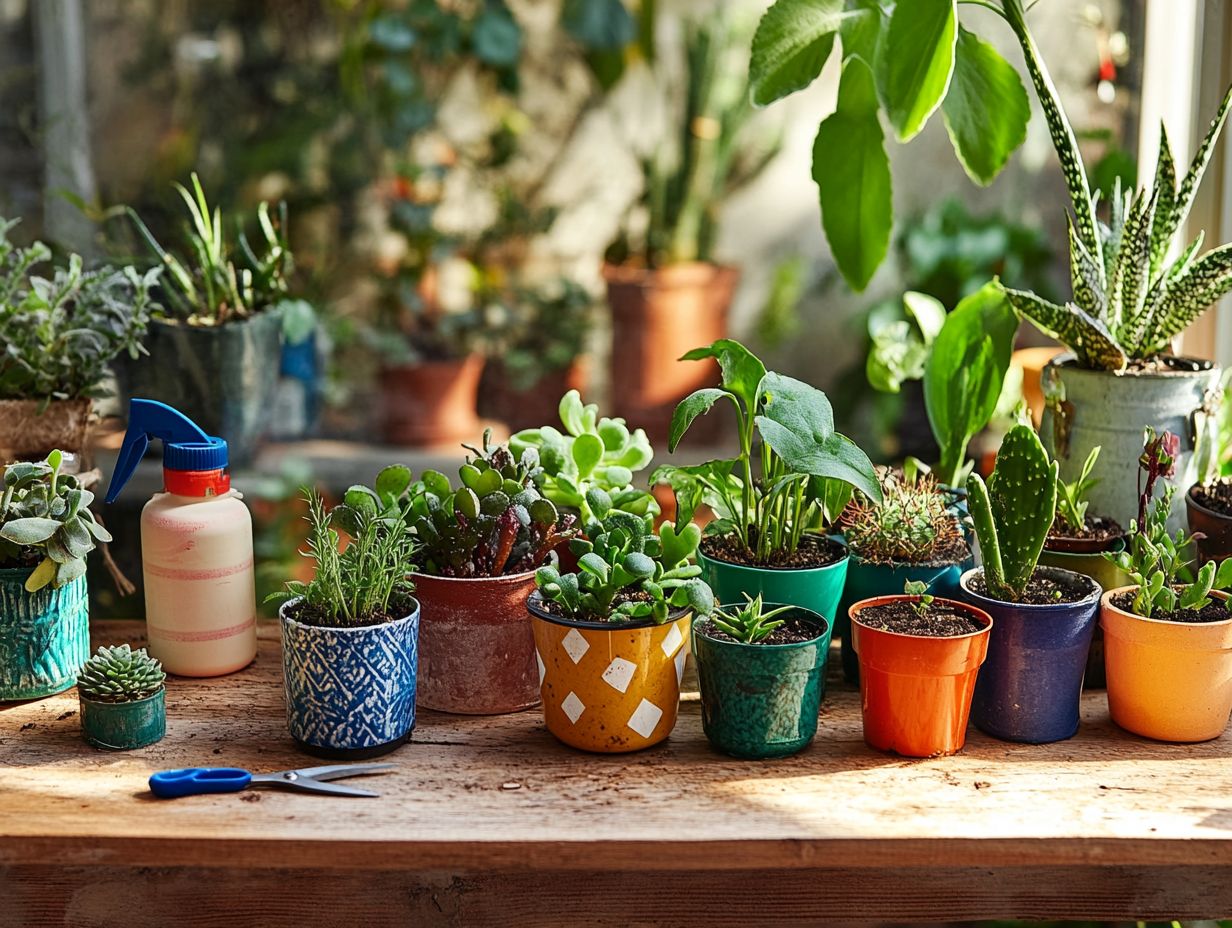
To ensure successful plant propagation, adhere to specific guidelines that emphasize creating optimal growth conditions, nurturing your plants diligently, and monitoring their growth throughout the process.
By following these guidelines, you set the stage for thriving plants and a fruitful gardening experience.
Factors to Consider for Optimal Growth
Consider several key factors for optimal growth during propagation, such as providing indirect light and adopting appropriate watering practices.
Address the specific needs of various plant species, and understand different soil types. The right blend can significantly impact plant health. For instance, a well-draining mix for succulents differs markedly from a moisture-retentive blend suited for ferns.
Monitoring environmental factors is crucial. Make sure temperature and humidity levels align with each species’ unique propagation needs. Using clean water and providing indirect light enhances your propagation experience.
Regularly check for signs of distress or growth, which can give you insights on adjusting light exposure or watering schedules. This creates a nurturing environment for your thriving plants.
Common Mistakes in Plant Propagation
Mistakes in plant propagation are common. Understanding these pitfalls, such as improper cutting techniques, can significantly elevate your propagation experience.
Such knowledge leads to healthier stems and robust root development through proper cutting methods, transforming your indoor space into a vibrant oasis.
How to Avoid and Fix Them
Avoiding mistakes in plant propagation requires attention to detail and a solid understanding of common pitfalls. Knowing how to address these issues can enhance your success.
Familiarize yourself with each plant species’ specific needs to navigate complexities. Keep an eye on environmental factors like moisture levels, temperature, and light exposure to sidestep typical problems.
Pests, such as aphids and spider mites, can harm your young plants. Regular inspections and maintaining cleanliness in your growing area are essential. If problems do arise, use organic pest control methods to restore your plants’ vitality.
Frequently Asked Questions
What is plant propagation?
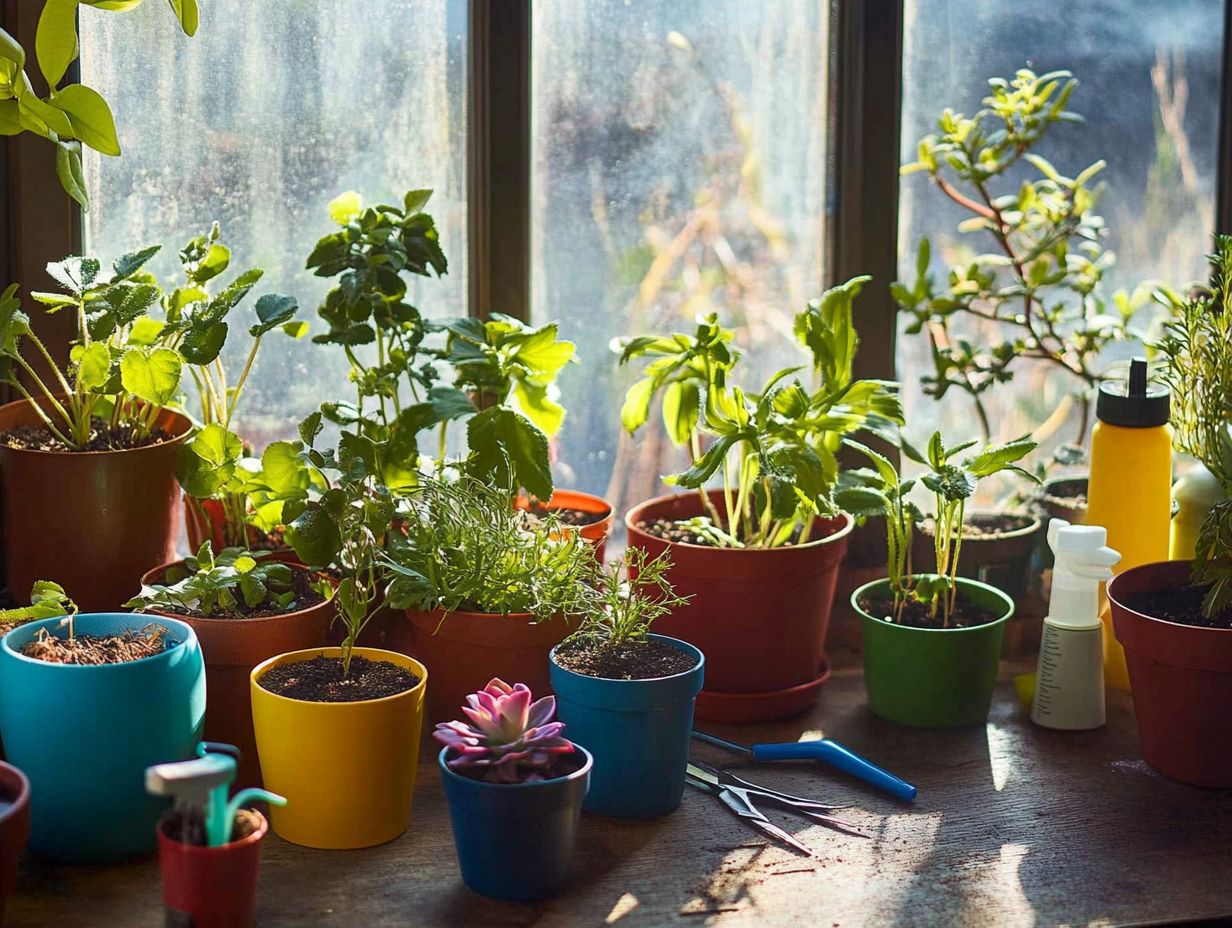
Plant propagation is the process of creating new plants from existing ones. It involves techniques like seed germination, taking cuttings, and dividing roots.
Why is plant propagation useful for beginners?
Learning plant propagation is a cost-effective way for beginners to grow new plants, such as sedum and roses, and expand their collections without purchasing new ones.
What ways can I propagate plants?
The methods of plant propagation include seed germination, stem cuttings, leaf cuttings, division, layering, and grafting. Each method suits different plants and has its pros and cons.
Can I propagate any type of plant?
While many plants can be propagated, not all will thrive. Research the specific plant you want to propagate and determine the best method for it.
Do I need any special equipment for plant propagation?
Some propagation methods may require specialized tools, but many can be done with basic gardening tools like pruning shears and potting mix. Clean tools and a suitable medium ensure better chances of success.
Is plant propagation difficult for beginners?
Plant propagation may seem scary at first, but it s truly rewarding! With a little research and practice, you can become a pro.
Jump in with some easy-to-propagate plants. Using the right techniques will skyrocket your chances of success!

